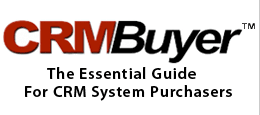I spent an interesting day at Harvard Law School last week at the invitation of Doc Searls for a conference on the intersection of CRM and VRM or vendor relationship management. Doc’s involved with the Berkman Center at Harvard, which sponsors research into issues of Law and the Internet among other things. He’s also one of the authors of The Cluetrain Manifesto which should be required reading in our line of work. Lots of other CRM folk were too there including analyst Mitch Lieberman and Ed Sullivan from Radian6. We tweeted up a storm and you can search on the tag #VRMCRM2010.
It was an interesting and enlightening day and I only wish I’d had enough time to attend the second day but I had commitments. That said it’s hard to describe what I found out but let me try.
VRM, in my humble construction is in some ways a mirror image of CRM in that it tries to address what I call the at-large issues of the vendor-customer interface. But the two differ in many ways that are good and constructive. Where CRM focuses on issues around sales, marketing, service and support, VRM takes a more holistic view and tries to answer some of the more in-depth issues like the nature of the legal relationship between the parties and what contracts between them should and should not contain.
That’s grossly over simplified and one-dimensional. Other aspects include how much personal data a person should store about his or her needs and finances and where it should be stored. Should all of your household data like income, mortgage status and the vendor relationships you have be stored on line and by whom are typical questions and things get complicated pretty quickly. Then there’s the mega question, who do you trust and what does trust mean anyhow?
At the start of a panel I was on with Mitch I said I thought I’d gotten too much information and felt like a baby in need of a nap. Maybe you get the idea.
But the big difference between VRM and CRM to me, and this is probably a gross over simplification, is that CRM seems more bottom up and VRM more top down. VRM seems to me to be seeking solutions that can be coded and provided by vendors or other parties for customers to use but who pays for it and who trusts such a solution are good questions.
On the other hand CRM has the same kind of top down approach but what makes it different is the social aspect, which is bottom up. I don’t see much penetration of social media into VRM yet and I think that’s a bet that’s being missed, at least for now. Social media used correctly is a big deal because it provides a missing element, something that takes CRM and potentially VRM from a more or less static perspective to something more dynamic.
The great thing about social CRM is that it lets the genie out of the bottle. It introduces randomness and uncertainty to the puzzle and that’s largely a good thing. You can’t program a customer relationship, there are too many permutations and customers do things you just can’t always predict.
My big takeaway from the conference is the wisdom of crowds, the idea that since you can’t predict, take a deep breath and stop trying. Instead, just ask the customer and, if you do it right, you’ll get amazing insights. It struck me that the wisdom of crowds is, perhaps, one thing that VRM could incorporate with great success.
In one discussion I recall, someone asked a question about what it would take to gather customer input with one hundred percent accuracy. I see that as a problem because nothing gets to the century mark and trying is an exercise in futility. Crowd wisdom doesn’t go there, it leverages the idea that the majority of a large enough sample managed to incorporate the ideas of decentralization, independence and diversity does the job.
Crowd wisdom and social media are not silver bullets for improving VRM or CRM for that matter. For the most part VRM delves into questions that CRM hasn’t even gotten to yet. Nonetheless, CRM and VRM practitioners appear to me to have more than a few misconceptions about the other and forums like Doc Searls’ last week are a welcome introduction of people and attempt at melding of ideas. All of us could gain something from more of these. If nothing else, in the words of Mitch Lieberman, we’d all feel smarter by being in the surroundings of Harvard Law School.
 CRM Magazine/destinationCRM.com
CRM Magazine/destinationCRM.com CRMBuyer
CRMBuyer ForecastingClouds
ForecastingClouds InSide CRM
InSide CRM SearchCRM
SearchCRM Animal Spirits
Animal Spirits Butterfly Economics, Paul Ormerod
Butterfly Economics, Paul Ormerod Competing on Analytics: The New Science of Winning
Competing on Analytics: The New Science of Winning Crowdsourcing
Crowdsourcing Dealing with Darwin, Geoffrey Moore
Dealing with Darwin, Geoffrey Moore Hello, Ladies! Dispatches from the Social CRM Frontier
Hello, Ladies! Dispatches from the Social CRM Frontier Origin of Wealth: Evolution, Complexity, and the Radical Remaking of Economics
Origin of Wealth: Evolution, Complexity, and the Radical Remaking of Economics Strategy and the Fat Smoker
Strategy and the Fat Smoker The Black Swan
The Black Swan The Wisdom of Crowds
The Wisdom of Crowds Twitter
Twitter